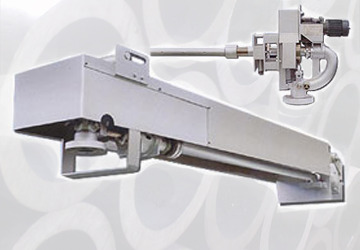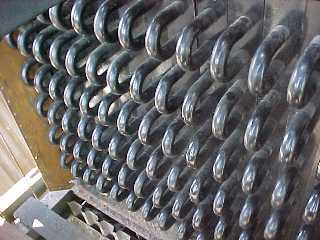
The Ultimate Guide to Sootblower Replacement Parts
Sootblowers are essential components of industrial boilers. Just like the name implies, they can remove soot and ash buildup from a boiler’s heat exchange surfaces.
Home » What is a Rotary Soot Blower?
When operating your boiler, it is crucial to keep the walls and interior surfaces clean of soot and other combustion byproducts so your boiler can continue to run efficiently and safely. Here is where one of the most critical pieces of auxiliary equipment comes into play: soot blowers. Soot blowers have many shapes, forms, and applications, with one of the most common types of soot blowers being the stationary rotary blower.
Soot is a carbon-based compound that accumulates as a byproduct of combustion and sticks to the walls and surfaces of your boiler. Soot is a natural insulator, which means it does not conduct heat efficiently. By reducing the conductivity of heat in the boiler, soot can reduce the efficiency of your system. As soot traps heat, it can also cause fires if not cleaned properly, damaging your system and causing safety risks for employees.
Unlike other soot blowers that retract from the boiler when not in use, the blowing tube/element of a rotary soot blower remains inside the boiler at all times. This blowing tube includes nozzles placed along its length, and element bearings attached to the boiler tubes support its weight.
When the rotary soot blower is activated, a drive motor rotates the blower tube, and a blowing medium emits from the nozzles. The blowing medium can be compressed air, saturated steam, or superheated steam. As the element rotates, the blowing medium removes soot from a large portion of the boiler. High-performing rotary soot blowers can provide blowing arcs between 30 and 360 degrees.
Manual operation, where an employee activates the soot blower after inspection of the boiler, is inefficient and can lead to infrequent or too frequent cleaning. Intelligent soot blowers operate automatically when the internal flue gas reaches a specific temperature. This temperature is calculated by how much heat is retained in the system by accumulated soot. The system then analyzes which blowers need to be activated and at what frequency, and the blowing process typically ends after a certain number of rotations.
Each type of soot blower is ideally suited for different applications and parts of the boiler system, and rotary soot blowers are the same. However, rotary soot blowers experience elevated temperatures and demanding operational conditions because they remain in the boiler even as it operates. Even though most high-quality rotary blowers use heat-resistant and durable materials, the inability to retract excludes them from high-temperature regions of your boiler, like the combustion chamber. You can typically find rotary soot blowers in the superheater, economizer, and air heater.
The relatively simple design of a rotary soot blower offers significant advantages in terms of application, space savings, and maintenance. One of the primary advantages of this type of blower is that it does not require much space. Because the rotary element does not retract, most of the area the blower occupies is inside the boiler, reducing the footprint of the equipment in a tight manufacturing industrial environment. Additionally, modern rotary blower designs are often cantilevered, eliminating the need for rear supports and further reducing space requirements.
It stands to reason that a more complex piece of equipment will be more difficult or expensive to maintain because there are more points of failure. The simplicity of design allows for easier maintenance in rotary soot blowers. Additionally, each rotary soot blower design allows for easy access to the rotating element should it need to be maintained or replaced.
The smaller size and fewer necessary components of a stationary rotary soot blower also typically mean a lower upfront cost than large retractable soot blowers (LRSB), the other primary type of soot blower. The cost savings are particularly noticeable when manufacturing and industrial facilities could require dozens or even hundreds of soot blowers to clean their equipment.
At Industrial Boilers America, we are leading the way to zero waste by developing, deploying, and licensing superior soot blowers manufactured at a fraction of the cost of our competitors. To learn more about the different types of soot blowers, check out our article and see which is best for your needs.
Contact our experts today to discuss how a rotary soot blower can keep your boiler running efficiently and safely for years to come.
At Industrial Boilers America, we lead in providing the development, licensing, and deployment of Industrial Power plants. We partner with other leaders of communities and governments to foster long-term relationships that create sustainable energy, jobs, and social responsibility. Our philosophy that sustainability should be rooted in the betterment of the ecosystem rather than profit allows us to provide services that will enable our partners to reinvest in themselves, resulting in a sustainable community.

Sootblowers are essential components of industrial boilers. Just like the name implies, they can remove soot and ash buildup from a boiler’s heat exchange surfaces.

Boilers provide essential heating and steam generation for industries ranging from power production to manufacturing. To ensure safety, efficiency, and functionality, rely heavily on sophisticated

Industrial boilers are essential for keeping the world moving. Understanding the critical industrial boiler parts ensures efficient operation, safety, and longevity of equipment. Main Industrial